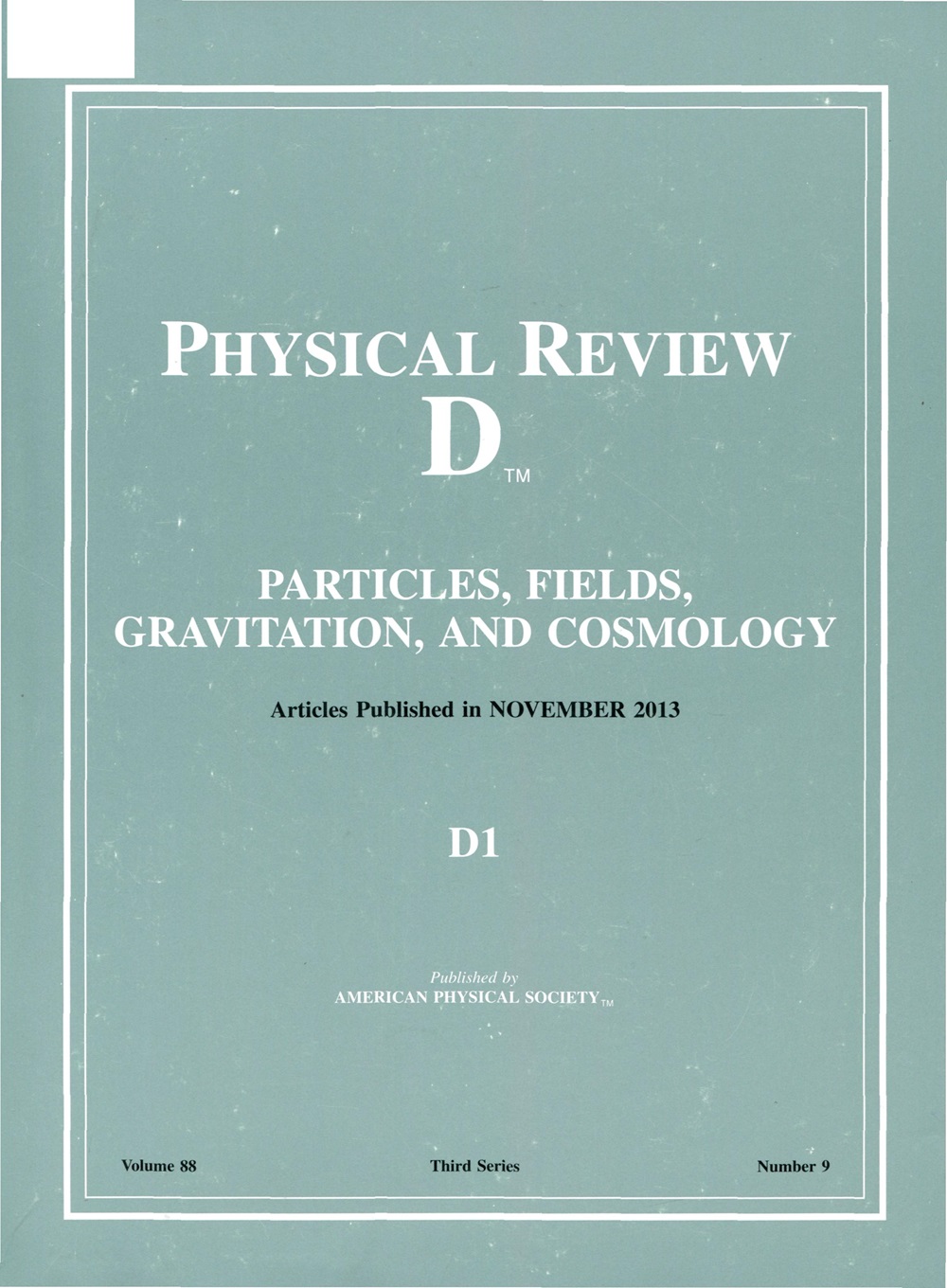SU(3)晶格Yang-Mills理论的环弦强子逼近:三价顶点的Hilbert空间
IF 5
2区 物理与天体物理
Q1 Physics and Astronomy
引用次数: 0
摘要
近年来,SU(3)晶格规范理论的规范不变态的构造引起了人们的新兴趣,但由于需要SU(3) Clebsch-Gordon系数,实现它们变得复杂。在晶格规范理论的环弦强子(LSH)方法中,初等激发是严格规范不变的,并且构造基不需要知道Clebsch-Gordon系数。最初是为SU(2)开发的,LSH公式最近被推广到SU(3),但仅限于一个空间维度。在这项工作中,我们推广了LSH方法来构造在三价顶点上的SU(3)规范不变状态的基,这是多维空间的基本构建块。从SU(2)顶点直接泛化得到一个合理的基;然而,在Hilbert空间的某些扇区中,如此定义的朴素LSH基向量存在非正交的问题。正交性问题与SU(3)张量积相关的“缺失标签”或“外多重性”问题直接相关,也可以用Littlewood-Richardson系数或对“第七卡西米尔”算子的需求来表达。不受问题影响的状态以封闭形式正标准化。对于受影响的扇区,我们讨论了非正交基及其正交化。第七卡西米尔算子的几个候选算子很容易从LSH量规-单重态算子组中构造出来。第7个卡西米尔的对角化表示了得到完全标准正交基的一个规定性解,但一个封闭形式的一般解还有待发现。2025年由美国物理学会出版本文章由计算机程序翻译,如有差异,请以英文原文为准。
Loop-string-hadron approach to SU(3) lattice Yang-Mills theory: Hilbert space of a trivalent vertex
The construction of gauge-invariant states of SU(3) lattice gauge theories has garnered new interest in recent years, but implementing them is complicated by the need for SU(3) Clebsch-Gordon coefficients. In the loop-string-hadron (LSH) approach to lattice gauge theories, the elementary excitations are strictly gauge invariant, and constructing the basis requires no knowledge of Clebsch-Gordon coefficients. Originally developed for SU(2), the LSH formulation was recently generalized to SU(3), but limited to one spatial dimension. In this work, we generalize the LSH approach to constructing the basis of SU(3) gauge-invariant states at a trivalent vertex—the essential building block to multidimensional space. A direct generalization from the SU(2) vertex yields a legitimate basis; however, in certain sectors of the Hilbert space, the naive LSH basis vectors so defined suffer from being nonorthogonal. The issues with orthogonality are directly related to the “missing label” or “outer multiplicity” problem associated with SU(3) tensor products and may also be phrased in terms of Littlewood-Richardson coefficients or the need for a “seventh Casimir” operator. The states that are unaffected by the problem are orthonormalized in closed form. For the sectors that are afflicted, we discuss the nonorthogonal bases and their orthogonalization. A few candidates for seventh Casimir operators are readily constructed from the suite of LSH gauge-singlet operators. The diagonalization of a seventh Casimir represents one prescriptive solution toward obtaining a complete orthonormal basis, but a closed-form general solution remains to be found. Published by the American Physical Society 2025
求助全文
通过发布文献求助,成功后即可免费获取论文全文。
去求助
来源期刊

Physical Review D
物理-天文与天体物理
CiteScore
9.20
自引率
36.00%
发文量
0
审稿时长
2 months
期刊介绍:
Physical Review D (PRD) is a leading journal in elementary particle physics, field theory, gravitation, and cosmology and is one of the top-cited journals in high-energy physics.
PRD covers experimental and theoretical results in all aspects of particle physics, field theory, gravitation and cosmology, including:
Particle physics experiments,
Electroweak interactions,
Strong interactions,
Lattice field theories, lattice QCD,
Beyond the standard model physics,
Phenomenological aspects of field theory, general methods,
Gravity, cosmology, cosmic rays,
Astrophysics and astroparticle physics,
General relativity,
Formal aspects of field theory, field theory in curved space,
String theory, quantum gravity, gauge/gravity duality.
 求助内容:
求助内容: 应助结果提醒方式:
应助结果提醒方式:


